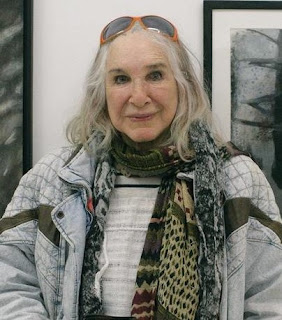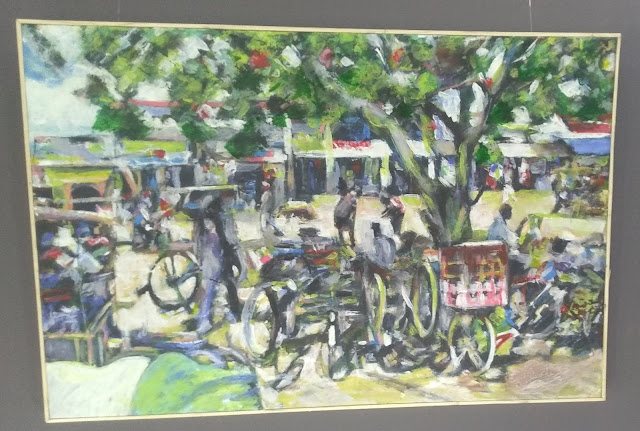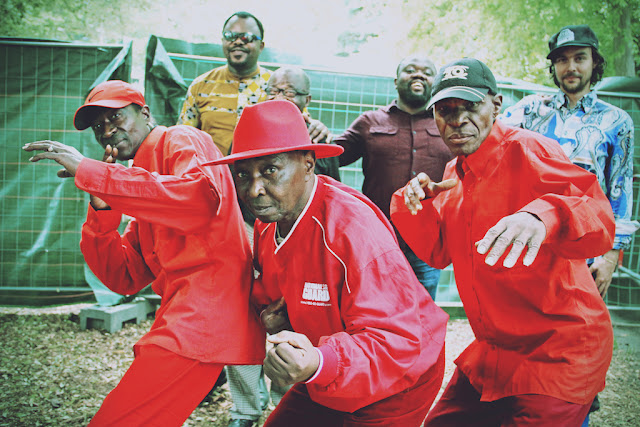By Margaretta wa Gacheru (228 February 2019)
With international women’s day upcoming next Friday, 8th
March, it’s well worth taking note of how women artists are making the most of
that date to illustrate what they are doing artistically.
On the 8th itself, Polka Dot Gallery which is
owned and curated by Lara Ray, there’ll be an all-women’s exhibition that will
feature six Kenyan artists. They’ll include Anne Mwiti who also lectures in
fine art at Kenyatta University, Joy Maringa, Mary Ogembo, Nadia Wamunyu, Patti
Endo and Sebawali Sio.
Joy Maringa's Lip art
But even before the actual day given over to women, their
artistry will be on display from tomorrow when the African Twilight Gala takes
place at African Heritage House. There the amazing photography of veteran
artists, Carol Beckwith and Angela Fisher will be celebrated and their beautiful
twin-volume book, ‘African Twilight: Vanishing Rituals and Ceremonies’ will be there
for show and for sale. Also on hand will be the award-winning photographers,
Angela and Carol who will present a film about their incomparable life journey
around the region.
Angela Fisher and Carol Beckwith on their travels
As the Gala will also be celebrating African Heritage House’s
owner Alan Donovan’s more than 50 years living and working in Africa, the
Nigerian batik artist Niki 77 Okundaye is coming especially to celebrate Alan’s
50 years here. Donovan’s first stop in the region was Nigeria and Niki is the
first female artist he met, so they have a special bond, particularly as Niki
has gone on to establish the Oshogbo Art Centre where she’s revived the lost
art of making Adire cloth.
Niki 77 Okundaye (left) in her Adire indigo fabric from Oshogbo
Then from Monday, in commemoration of UNEP’s Ministerial
Conference which is opening the same day, Geraldine Robarts will be exhibiting
her colorful paintings at two venues where many of the conference attendants
will be staying, namely The Tribe and The Trademark Hotels. Geraldine taught
art at KU and Makerere for many years before taking up oil painting as a
full-time passion and profession
Geraldine Robarts' Parrots
Then on Tuesday evening at the Radisson Blu Hotel, Danda
Jaroljmek of Circle Art Gallery will preside over the Fifth East African Art
Auction which is where art lovers will want to be. Danda has brought together
artworks from all over East Africa as well as from Nigeria and South Africa.
There will be excellent artworks up for auction by Kenyan artists as well,
including several women: Camille Wekesa, Eunice Wadu, Rosemary Karuga and Tabitha
wa Thuku among others.
Camille Wekesa's Tsavo trees
At the Roslyn Riviera branch of One Off Gallery, Anita
Kavochy’s art is up at that glorious new art space. Meanwhile, at One Off’s
home gallery, the portraits of Olivia Pendergast are also on display.
And in Lamu, Yony Waite who’s the co-founder of the acclaimed
Gallery Watatu has a beautiful solo exhibition of her paintings, prints and
tapestries at her Wildebeeste Workshop Gallery. Situated inside one of the
oldest Swahili houses on the island, Yony’s picked the perfect atmosphere to
display works that specifically reflect the many dimensions of life in Lamu.
Eunice Wadu's prints are in the Art Auction East Africa
They’re in contrast to artworks she recently showed at Polka Dot which were
mainly highlighting the busy life of the animals that she sees every day at Athi
River where she stays. Also in Lamu, Baraka Gallery is hosting two women
artists’ work, the paintings of Helen Feiler and the photography of Corrie
Wingate.
Back in Nairobi, Tabu Monyoki has her prints up at Kobo
Trust; Moira Bushkimani and Sebawali Sio both have their artwork on display at
Brush Tu Art Studio. And over in Kariobangi North, Joan Otieno will be having a
recycled-plastic fashion show at Warembo wa Sanii Art Studio.
Recycled plastic art painting by Joan Otieno




































